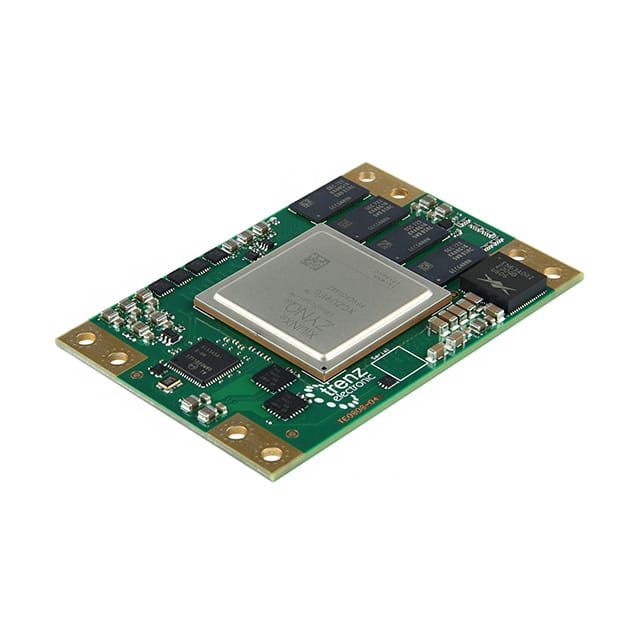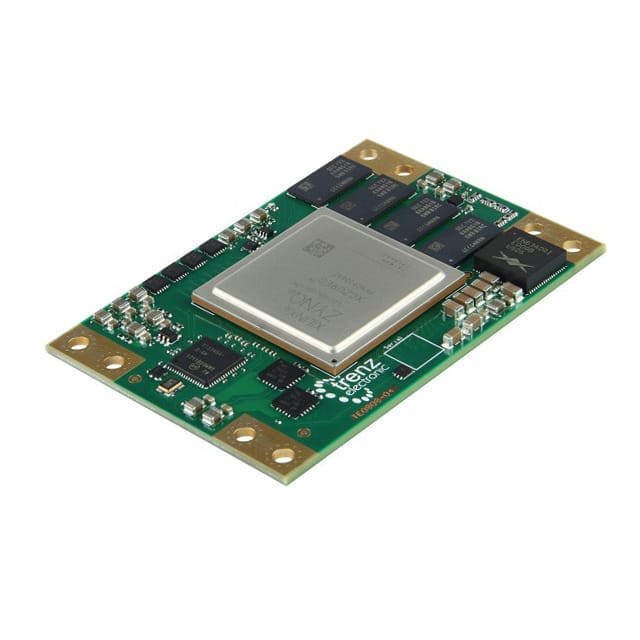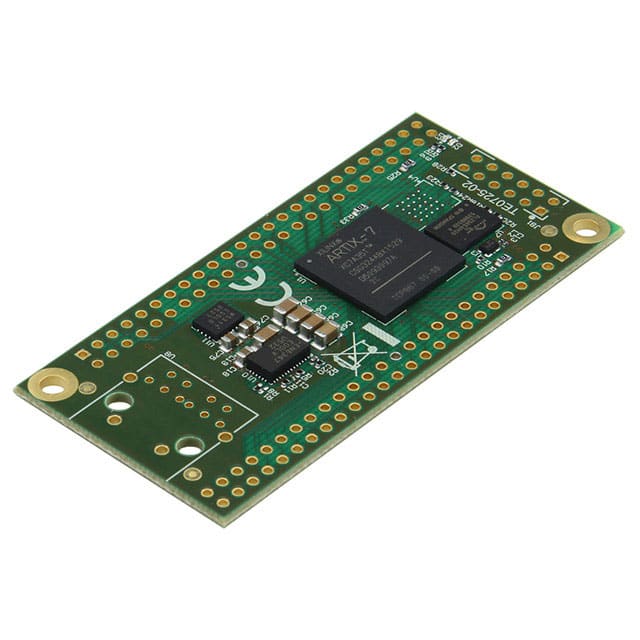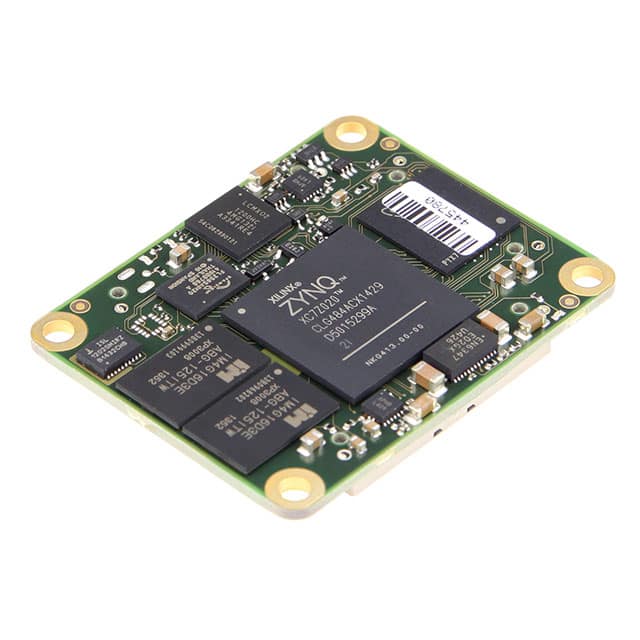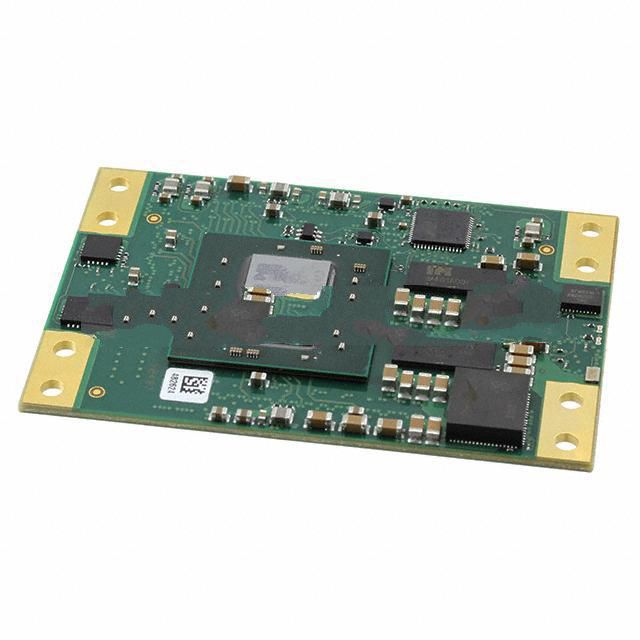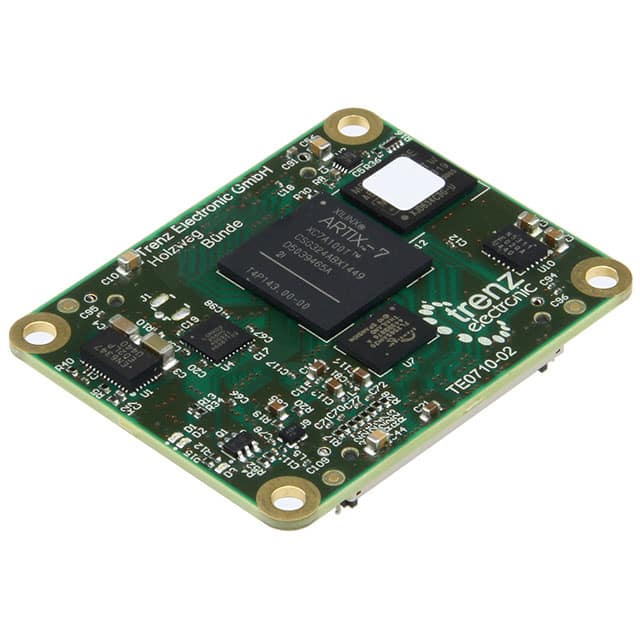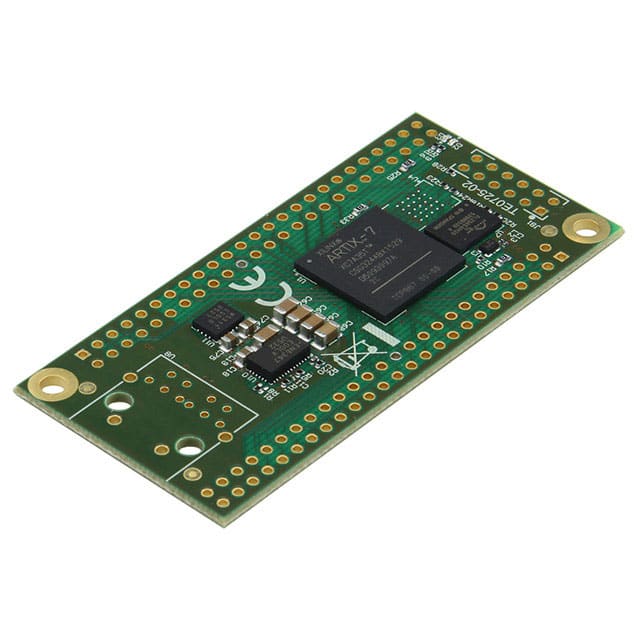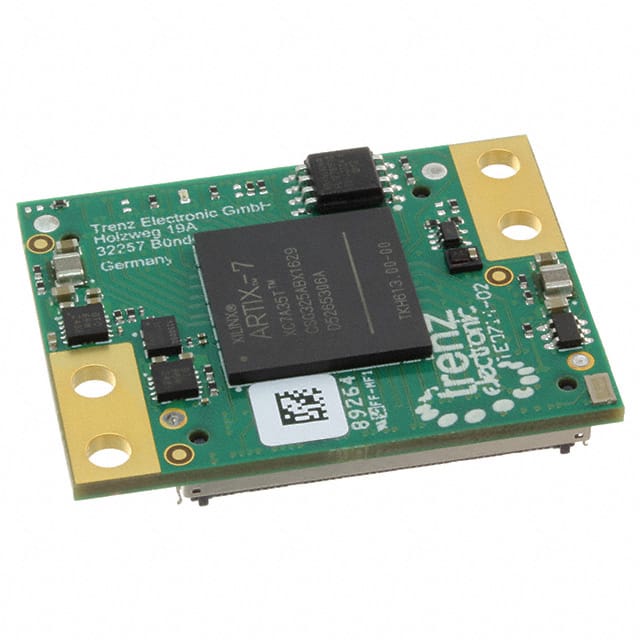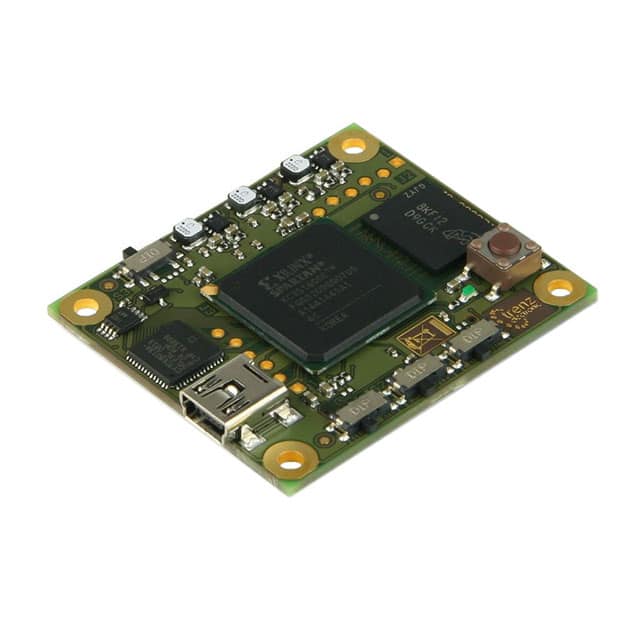Previous Chapter:What does a power management IC do?
Next Chapter:STM32F103C6T6 A powerful microcontroller ushering in a new chapter in embedded systems
The definition and working principle of automatic controller

Post Date:2024-05-21,Trenz Electronic GmbH
The definition and working principle of automatic controller
An automatic controller is a device or system used to monitor and regulate system behavior, with the purpose of keeping the system in a desired state or achieving a desired goal without manual intervention. Automatic controllers usually consist of sensors, actuators and control algorithms and are widely used in industrial production, transportation, energy management, environmental protection and other fields. .
Working principle of automatic controller:
Sensor: The automatic controller obtains the status information of the system through sensors, such as temperature, pressure, speed, etc.
Control algorithm: Based on the information obtained by the sensor, the control algorithm analyzes and calculates the system and determines what control actions should be taken.
Actuator: The control actions determined by the control algorithm are applied to the system through the actuator to adjust the system.
Structure of automatic controller:
Automatic controllers generally consist of sensors, actuators, controllers and feedback systems. The sensor is responsible for collecting the status information of the control object and converting it into electrical signals to the controller; the actuator controls and adjusts the control object according to the instructions of the controller; the controller is the core part of the automatic control system, which receives the information from the sensor. The signal is processed to generate control instructions and transmitted to the actuator; the feedback system is used to monitor the status of the control object and transmit the feedback signal to the controller to correct and adjust the control process.
Automatic controller function:
Maintain stability: Automatic controllers can ensure that the system maintains stable operation despite changes in external conditions or disturbances. For example, controllers in self-driving cars can ensure that the vehicle stays in its lane.
Optimize performance: By adjusting system parameters, automatic controllers can optimize the performance of the system so that it can achieve predetermined goals more efficiently. For example, control systems in industrial production can optimize production efficiency.
Improved safety: Automatic controllers can monitor the status of the system and take timely measures to avoid potential dangers or failures.

Automatic controller design and debugging:
Designing and debugging automatic controllers requires a series of steps, the following are general guidelines
design phase:
Define system requirements: clarify the functional and performance requirements of the system, determine the required inputs, outputs, and expected system behavior.
Select sensors and actuators: Select appropriate sensors and actuators according to system requirements to ensure that they can accurately obtain system status information and implement control actions.
Select control algorithm: Select an appropriate control algorithm according to the characteristics and control requirements of the system, such as PID control, fuzzy logic control, model predictive control, etc.
Design the control system architecture: Determine the connection methods and communication protocols between sensors, actuators and control algorithms, and design the overall architecture of the control system.
Simulation and simulation: Use mathematical models or simulation software to simulate and simulate the designed control system to evaluate its performance and stability.
Implementation phase:
Hardware implementation: According to the requirements of the design stage, select and install sensors and actuators, and build the hardware platform of the control system.
Software programming: According to the selected control algorithm, write the control program to implement the system's control logic and algorithm.
System integration: Integrating sensors, actuators and control programs to ensure they work properly and coordinate with each other.
Debugging and verification: By conducting experiments and tests on the system, debugging control parameters and algorithms, and verifying whether the system meets the design requirements and performance indicators.
Debugging phase:
Preliminary debugging: First conduct preliminary debugging of the system to check whether the sensors and actuators are working properly to ensure the accuracy of signal collection and control actions.
Parameter adjustment: According to the actual test results, adjust the parameters in the control algorithm to optimize the performance and stability of the system.
Closed-loop testing: Conduct closed-loop testing to simulate system behavior in a real working environment and evaluate the system's response to various interferences and changes.
Performance evaluation: Conduct a comprehensive performance evaluation of the system, including response time, stability, robustness and other indicators to ensure that the system meets the expected design requirements.
System Optimization:
Feedback and improvement: Based on the results of the debugging phase, collect user feedback and system performance data to continuously improve and optimize the design and implementation of the system.
Iterative optimization: Continuously optimize and improve the system, gradually improve the performance and reliability of the system, and meet changing needs and environments.
Analysis of common faults of automatic controllers:
Automatic controllers may encounter various faults. The following are some common faults and possible analysis and solutions.
Sensor failure:
No signal output: The sensor may be unable to output a signal due to connection failure, power supply failure, or failure of the sensor itself.
Analysis and solution: Check the sensor's power supply and connection lines to ensure that the sensor is working properly; if the sensor itself is faulty, the sensor may need to be replaced or repaired.
Signal drift or deviation: The signal output by the sensor may drift or deviate due to external interference or internal faults.
Analysis and solution: Check whether there are interference sources around the sensor, such as electromagnetic interference or vibration; calibrate the sensor or adjust the control algorithm to compensate for signal deviation.
Actuator failure:
Unable to perform control actions: The actuator may be unable to perform control actions due to power failure, mechanical obstruction, or failure of the actuator itself.
Analysis and solution: Check the power supply and mechanical components of the actuator to ensure that the actuator is operating normally; if the actuator itself fails, the actuator may need to be replaced or repaired.
Inaccurate execution of actions: The actuator may have inaccurate execution of actions due to incorrect parameter settings or mechanical wear.
Analysis and solution: Check whether the parameter settings of the actuator are correct and make adjustments as necessary; check whether the mechanical parts of the actuator are severely worn and replace relevant parts if necessary.
Control algorithm failure:
Poor stability: The control algorithm may cause poor system stability due to incorrect parameter settings or control logic design flaws.
Analysis and solution: Check whether the parameter settings of the control algorithm are reasonable and make adjustments as needed; redesign or optimize the control algorithm to improve system stability.
Poor performance: The control algorithm may result in poor system performance due to high complexity or poor real-time performance.
Analysis and solution: Optimize the control algorithm, simplify the control logic or improve the algorithm efficiency to improve system performance; use a faster controller or increase the system sampling frequency to improve the real-time nature of the control.
System integration failure:
Improper cooperation between sensors and actuators: Improper cooperation between sensors and actuators may result in reduced system performance or poor control.
Analysis and solution: Re-evaluate the selection and arrangement of sensors and actuators to ensure they work well together; redesign the control system architecture to optimize the cooperation of sensors and actuators.
Communication failure: Communication failure between sensors, actuators or controllers may result in poor information transfer or failure to execute control instructions.
Analysis and solution: Check the communication line and communication protocol settings to ensure that the communication is working properly; check whether the communication hardware device and driver are normal, and replace or repair the device if necessary.
Automatic controller application scenarios:
Industrial automation: Automatic controllers are widely used in factory production lines to control parameters such as robotic arms, conveyor belts, temperature, and pressure to improve production efficiency and quality.
Transportation system: Traffic lights, subway train control systems, etc. are all application scenarios of automatic controllers to optimize traffic flow and reduce traffic congestion.
Home automation: Smart thermostats, smart lighting systems, etc. in smart home systems are applications of automatic controllers to improve home comfort and energy saving.
Aerospace: Autonomous aircraft and autonomous navigation systems in spacecraft all rely on automatic controllers to ensure flight safety and goal achievement.
An automatic controller is a device or system used to monitor and regulate system behavior, with the purpose of keeping the system in a desired state or achieving a desired goal without manual intervention. Automatic controllers usually consist of sensors, actuators and control algorithms and are widely used in industrial production, transportation, energy management, environmental protection and other fields. .
Working principle of automatic controller:
Sensor: The automatic controller obtains the status information of the system through sensors, such as temperature, pressure, speed, etc.
Control algorithm: Based on the information obtained by the sensor, the control algorithm analyzes and calculates the system and determines what control actions should be taken.
Actuator: The control actions determined by the control algorithm are applied to the system through the actuator to adjust the system.
Structure of automatic controller:
Automatic controllers generally consist of sensors, actuators, controllers and feedback systems. The sensor is responsible for collecting the status information of the control object and converting it into electrical signals to the controller; the actuator controls and adjusts the control object according to the instructions of the controller; the controller is the core part of the automatic control system, which receives the information from the sensor. The signal is processed to generate control instructions and transmitted to the actuator; the feedback system is used to monitor the status of the control object and transmit the feedback signal to the controller to correct and adjust the control process.
Automatic controller function:
Maintain stability: Automatic controllers can ensure that the system maintains stable operation despite changes in external conditions or disturbances. For example, controllers in self-driving cars can ensure that the vehicle stays in its lane.
Optimize performance: By adjusting system parameters, automatic controllers can optimize the performance of the system so that it can achieve predetermined goals more efficiently. For example, control systems in industrial production can optimize production efficiency.
Improved safety: Automatic controllers can monitor the status of the system and take timely measures to avoid potential dangers or failures.

Automatic controller design and debugging:
Designing and debugging automatic controllers requires a series of steps, the following are general guidelines
design phase:
Define system requirements: clarify the functional and performance requirements of the system, determine the required inputs, outputs, and expected system behavior.
Select sensors and actuators: Select appropriate sensors and actuators according to system requirements to ensure that they can accurately obtain system status information and implement control actions.
Select control algorithm: Select an appropriate control algorithm according to the characteristics and control requirements of the system, such as PID control, fuzzy logic control, model predictive control, etc.
Design the control system architecture: Determine the connection methods and communication protocols between sensors, actuators and control algorithms, and design the overall architecture of the control system.
Simulation and simulation: Use mathematical models or simulation software to simulate and simulate the designed control system to evaluate its performance and stability.
Implementation phase:
Hardware implementation: According to the requirements of the design stage, select and install sensors and actuators, and build the hardware platform of the control system.
Software programming: According to the selected control algorithm, write the control program to implement the system's control logic and algorithm.
System integration: Integrating sensors, actuators and control programs to ensure they work properly and coordinate with each other.
Debugging and verification: By conducting experiments and tests on the system, debugging control parameters and algorithms, and verifying whether the system meets the design requirements and performance indicators.
Debugging phase:
Preliminary debugging: First conduct preliminary debugging of the system to check whether the sensors and actuators are working properly to ensure the accuracy of signal collection and control actions.
Parameter adjustment: According to the actual test results, adjust the parameters in the control algorithm to optimize the performance and stability of the system.
Closed-loop testing: Conduct closed-loop testing to simulate system behavior in a real working environment and evaluate the system's response to various interferences and changes.
Performance evaluation: Conduct a comprehensive performance evaluation of the system, including response time, stability, robustness and other indicators to ensure that the system meets the expected design requirements.
System Optimization:
Feedback and improvement: Based on the results of the debugging phase, collect user feedback and system performance data to continuously improve and optimize the design and implementation of the system.
Iterative optimization: Continuously optimize and improve the system, gradually improve the performance and reliability of the system, and meet changing needs and environments.
Analysis of common faults of automatic controllers:
Automatic controllers may encounter various faults. The following are some common faults and possible analysis and solutions.
Sensor failure:
No signal output: The sensor may be unable to output a signal due to connection failure, power supply failure, or failure of the sensor itself.
Analysis and solution: Check the sensor's power supply and connection lines to ensure that the sensor is working properly; if the sensor itself is faulty, the sensor may need to be replaced or repaired.
Signal drift or deviation: The signal output by the sensor may drift or deviate due to external interference or internal faults.
Analysis and solution: Check whether there are interference sources around the sensor, such as electromagnetic interference or vibration; calibrate the sensor or adjust the control algorithm to compensate for signal deviation.
Actuator failure:
Unable to perform control actions: The actuator may be unable to perform control actions due to power failure, mechanical obstruction, or failure of the actuator itself.
Analysis and solution: Check the power supply and mechanical components of the actuator to ensure that the actuator is operating normally; if the actuator itself fails, the actuator may need to be replaced or repaired.
Inaccurate execution of actions: The actuator may have inaccurate execution of actions due to incorrect parameter settings or mechanical wear.
Analysis and solution: Check whether the parameter settings of the actuator are correct and make adjustments as necessary; check whether the mechanical parts of the actuator are severely worn and replace relevant parts if necessary.
Control algorithm failure:
Poor stability: The control algorithm may cause poor system stability due to incorrect parameter settings or control logic design flaws.
Analysis and solution: Check whether the parameter settings of the control algorithm are reasonable and make adjustments as needed; redesign or optimize the control algorithm to improve system stability.
Poor performance: The control algorithm may result in poor system performance due to high complexity or poor real-time performance.
Analysis and solution: Optimize the control algorithm, simplify the control logic or improve the algorithm efficiency to improve system performance; use a faster controller or increase the system sampling frequency to improve the real-time nature of the control.
System integration failure:
Improper cooperation between sensors and actuators: Improper cooperation between sensors and actuators may result in reduced system performance or poor control.
Analysis and solution: Re-evaluate the selection and arrangement of sensors and actuators to ensure they work well together; redesign the control system architecture to optimize the cooperation of sensors and actuators.
Communication failure: Communication failure between sensors, actuators or controllers may result in poor information transfer or failure to execute control instructions.
Analysis and solution: Check the communication line and communication protocol settings to ensure that the communication is working properly; check whether the communication hardware device and driver are normal, and replace or repair the device if necessary.
Automatic controller application scenarios:
Industrial automation: Automatic controllers are widely used in factory production lines to control parameters such as robotic arms, conveyor belts, temperature, and pressure to improve production efficiency and quality.
Transportation system: Traffic lights, subway train control systems, etc. are all application scenarios of automatic controllers to optimize traffic flow and reduce traffic congestion.
Home automation: Smart thermostats, smart lighting systems, etc. in smart home systems are applications of automatic controllers to improve home comfort and energy saving.
Aerospace: Autonomous aircraft and autonomous navigation systems in spacecraft all rely on automatic controllers to ensure flight safety and goal achievement.
Environmental monitoring: Meteorological observation stations, water quality monitoring systems, etc. all use automatic controllers to collect and analyze environmental data and take corresponding control measures.
Previous Chapter:What does a power management IC do?
Next Chapter:STM32F103C6T6 A powerful microcontroller ushering in a new chapter in embedded systems

